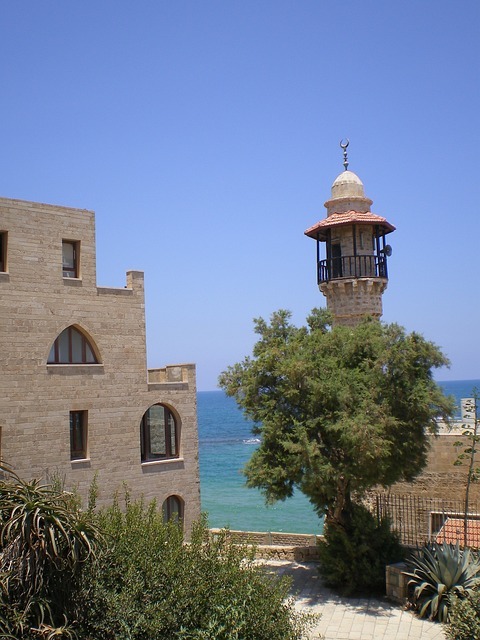Embarking upon any journey of purpose always begins with having a set destination in mind. In trying to determine the fate of the lost Ark, an essential starting point would be knowing exactly what it is that one is looking for. Many intrepid explorers have looked to solve the whereabouts of missing biblical artefacts. But without having a clear image in mind about exactly what one is hoping to find, identification problems are likely to fog the way ahead, even from the very starting point of the journey. Accordingly, trying to gain a clearer understanding of what the Ark of the Covenant is, and is not, will hopefully provide a more enlightened trail to pursue. We intend updating our knowledge base whenever appropriate.
admin
Monoatomic Gold
Theories abound suggesting that the covering of the Ark of the Covenant was made of monoatomic gold. We examine the reliability of this concept. The key Jewish source this theory can be compared with comes from the Talmud (B. B. 99a): ‘The available space in the Holy of Holies was not in the least diminished by the Ark and the cherubim—that is to say, that through the working of a miracle the Ark and the cherubim transcended the limitations of space.’ Trying to get any handle on this concept through mainstream science is seemingly allusive. Accordingly, the nearest explanations, beyond the realm of divinity, may be found in the disputed world of pseudo science.
Why is this relevant to our search
Simply stated, this substance is said to have next to unearthly components that could be associated with another dimension. If so, that could mean that the Ark is effectively masked from ground penetrating radar, and other state of the art technical tools that could help locate its whereabouts. In the following two articles, we look at both this atom’s composition, and reference to it being connected with the creation of the universe. It is imperative to mention that we should accept nothing on face value, and knowing which theories are out there should be countered with a sound and logical inquiries as to their validity. Conversely, in investigating something as mysterious as the Ark, we should also keep an open mind for unusual explanations that might also prove to have merit.
What is Monoatomic gold

This substance is supposed to mean a gold powder so fine that it consists of single atoms not joined by metal bonds to neighbouring gold atoms. Ingesting such a substance is claimed to bring about ‘all kinds of spiritual benefits. The theme was launched by David Hudson in the 1980’s in the US. David Hudson has now long been out of business but the idea lives on and other manufacturers market products called monoatomic gold, white powder of gold and other various names.
Does this contested theory warrant further investigation
It should be added that the dispute also lingers on as to its authenticity. Due to its alleged composition gaining a large following by those associating it with the Ark of the Covenant, it is fair to include this ingredient within our area of research. While there is always the risk of losing credibility due to investigating what is probably better termed a branch of pseudo science, bearing in mind that the legends associated with the Ark’s capabilities is far from mainstream academia, a balanced approach to such theories is essential. A great deal of scientific research works through a process of elimination, accordingly it would be unscientific not to include this theory within our research methodology, given all the circumstances.
Some contest that much in the field of molecular biology and genetics have been made about the possibility of bonding single atoms of gold with the DNA helix. Radio frequency EM fields can then cause these gold particles to vibrate, thus heating the DNA and influencing its chemistry. The gold particles offer a handle on the DNA molecule, as it were. This would lend some credence to the claims that monoatomic gold may indeed have some effect on DNA, at least in terms of making this increasingly sensitive to remote influences.
Is it harmful to body and soul

The Cassiopaean material describes use of this as the ultimate spiritual entrapment, akin to selling one’s soul. Claims from the promoters of monoatomic gold as a “technology of ascension” include all manner of strange psychic occurrences, including a person who started experiencing increasingly frequent, involuntary “spiritual orgasms”. This may not be literally false but should give rise to some questions.
Some infer with proclaimed probability that monoatomic gold indeed can deliver one even further in the hands of outside forces not of one’s choosing. They also put this together with the Cassiopaea channeled information stating that “light waves were used to cancel the 10 first factors of DNA” in the context of what’s known as ‘the mythical fall.’ Monoatomic gold may be a device to a similar effect.
A cosmic connection
Some have proposed that they (monatomic atoms) are manufactured naturally in the center of stars where high temperatures can disintegrate molecular bonds. Others think that they were made when the universe began — perhaps with the Big Bang. It has even been proposed that mono-atomic elements make up the elusive “dark matter”. In astrophysics and cosmology, dark matter is matter of unknown composition that does not emit or reflect enough electromagnetic radiation to be observed directly, but whose presence can be inferred from gravitational effects on visible matter.
The legend doesn’t end there. Proponents of this substance mention that as far in Greek mythology the quest for the secret of this substance was at the heart of the Golden Fleece legend, while in biblical terms it was the mystical realm of the Ark of the Covenant – the golden coffer which Moses brought out of Sinai, to be housed in the Temple of Jerusalem. The ancient Mesopotamians called the powder ‘shem-an-na’ (highward fire-stone) and the Egyptians described it as ‘mfkzt’, while the Alexandrians venerated it as the Paradise Stone.
Our research to date has clearly shown that the above ideas have been recycled through many publications, including one related to Masonic rituals. This adds impetus to the need to conduct more than a superficial investigation, whereby the mere acceptance of such theories suggests them to be reliable. However, it does go some way towards providing a more earthly explanation, or offering, to something that is far removed from any known scientific dimension.
The very skepticism faced with undertaking this venture often stems from a simple mindset. This relates to seriously questioning the authenticity of the Ark’s existence. If this is the case, could such doubts be based on the legends pertaining to the Ark’s supernatural abilities, rather than to the more mundane aspects of the artifact itself?

However, it would be a foregone failure to undertake such an expedition in the first place by avoiding taking into account the full records of the Ark’s inanimate and qualitative components. The solution is to take a parallel route of investigating both the physical and metaphysical attributes of the Ark of the Covenant, and later seeing possible avenues of alignment between the two.

We return to the first question, which essentially suggested that those with inquisitive minds might be less inclined to doubt the Ark’s more inanimate components. After all, as we shall discover, there are plentiful historical examples of similar cult oriented structures having been extant in the appropriate time period.
Before delving into the Ark’s alleged mystical qualities, our first step in this opening phase of our search will be to bring historic accounts of similar objects under investigation. Maybe be we can do better than Detective Levine, hot on Dean’s Trail, but don’t count on it.

Physics of Anti Gravity
The Book of Joshua 4:18 has a strange verse that can best be understood through its original Hebrew context. ‘It came about that when the priests carrying the Ark of the Covenant had come up from the middle of the Jordan and the soles of the priest’s feet were ‘lifted up’ to the dry ground that the waters of the Jordan returned to their place, and went over all its banks like before.’The Hebrew version of ‘lifted up’ uses a grammatical verb known as ‘niphal’ that basically describes an object in a passive state, having an action impose upon it. That’s a little like describing a door in its state of having been closed – an external force made that happen. This is one example of how speculation came about that the Ark could have defied gravity.
But the science involved goes a stage further than just describing the Ark having an ability to levitate. This verse would imply that such power can be extended to those in immediate contact with it.
Understanding the legends associated with the Ark’s amazing ability to be physically carried, bearing in mind its immense weight, has puzzled countless investigators. Prior to delving deeper into the Ark’s own entity related to this phenomenon, in the first instance we question the validity of an object being able to withstand gravitational pull.
Marvin Chomsky who directed the mini-series Holocaust passed away aged 92 years old. His talents won him an outstanding director’s award in 19798. His factual approach on presenting the series resulted in millions of views worldwide, including Germany, getting a gritty, realistic educational experience.
Chomsky born in the Bronx and raised in Brooklyn. He attended Stuyvesant High School in Manhattan, during which time he began working in radio, and later on, for a television show aimed at teenagers, while the medium was still in its early stages. He graduated from Syracuse University with a bachelor’s degree in speech in 1950, and from Stanford University with a master’s degree in drama the following year. He also served in the U.S. Army, before pursuing a career in film and television. His early jobs included work as an art director, set decorator, and producer.
The question of art stolen from World War 2 has plagued the art world for several decades. Accordingly, a recent court decision provides a possible landmark turning point. The U.S. Supreme Court ruled that heirs to a German Jewish art dealer could use the U.S. court system to reclaim a valuable painting their family had used as a bargaining chip with the Nazis, even though the painting is currently owned by Spain.
The Cassirer family, heirs of the painting, discovered it listed in a catalog for a Madrid museum and sued to reclaim it, which led the Spanish foundation to argue that the matter should be decided in Spanish courts, not California courts.
Harry Haft (also known as Herschel Haft; born Hertzko or Hertzka Haft on 28 July 1925 in Bełchatów, Poland; died 3 November 2007) was a survivor of the Auschwitz concentration camp where he boxed fellow inmates to survive. He was briefly a professional boxer in post-war Germany, and boxed as a light heavyweight in the United States from 1948–1949.
Born in Bełchatów, Poland on 28 July 1925, Haft’s father died when he was three years old. In 1939, when he was 14, Haft witnessed the invasion and German occupation of Poland. Under Nazi occupation, he ran a smuggling business with his older brother. By 1942, because he was Jewish, Haft was imprisoned in several German-Nazi slave labor camps where he was beaten and starved. Because of his strong physical stature, by 1943 an SS overseer trained him to be a boxer, and had him compete at fights to the death in front of the military personnel. The fights took place at the concentration camp Jaworzno, which was situated at a coal mine north of Auschwitz. Haft fought a total of 76 fights there. When the camp in Jaworzno was dissolved because of the advancing Soviet Red Army, thousands of its surviving inmates were sent West on death marches to Germany. Haft managed to escape from one such march in April 1945. On the run, he killed a bathing German soldier and donned his uniform. During the remaining weeks until the end of the war, he moved from village to village.
Hollywood actor Ben Foster is playing the role of Harry Haft in the recently released movie called The Survivor. To get into character, Ben subjected himself to a harsh diet until his body frame resembled that of a concentration camp inmate.
Cleveland Jewish News reporter Amanda Koehn covers the story of the arrest of a prominent Jewish community rabbi. Two Conservative Jewish associations called the allegations against Rabbi Stephen Weiss, the former senior rabbi at B’nai Jeshurun Congregation in Pepper Pike, “deeply disturbing” and are considering their own action in response.
He has allegedly been engaging in explicit online conversations with an undercover investigator posing as a 15-year-old boy. This has prompted several Jewish leaders to denounce the betrayal of trust between a rabbi and young members of his congregation.
Jaffa, in Hebrew Yafo and also called Japho or Joppa, the southern and oldest part of Tel Aviv-Yafo, is an ancient port city in Israel. Jaffa is famous for its association with the biblical stories of Jonah, Solomon and Saint Peter as well as the mythological story of Andromeda and Perseus, and later for its oranges.
The town was mentioned in Egyptian sources and the Amarna letters as Yapu. Mythology says that it is named for Yafet (Japheth), one of the sons of Noah, the one who built it after the Flood. The Hellenist tradition links the name to Iopeia, or Cassiopeia, mother of Andromeda. An outcropping of rocks near the harbor is reputed to have been the place where Andromeda was rescued by Perseus. Pliny the Elder associated the name with Iopa, daughter of Aeolus, god of the wind. The medieval Arab geographer al-Muqaddasi referred to it as Yaffa. The tell of Jaffa, created through the accumulation of debris and landfill over the centuries, made the hill even higher.
The boundaries of Tel Aviv and Jaffa became a matter of contention between the Tel Aviv municipality and the Israeli government during 1948. The former wished to incorporate only the northern Jewish suburbs of Jaffa, while the latter wanted a more complete unification. The issue also had international sensitivity, since the main part of Jaffa was in the Arab portion of the United Nations Partition Plan, whereas Tel Aviv was not, and no armistice agreements had yet been signed. On 10 December 1948, the government announced the annexation to Tel Aviv of Jaffa’s Jewish suburbs, the Arab neighborhood of Abu Kabir, the Arab village of Salama and some of its agricultural land, and the working class Jewish area of Hatikva. On 25 February 1949, the depopulated Arab village of Sheikh Muanis, on the opposite (northeast) side of Tel Aviv from Jaffa, was also annexed to Tel Aviv. On 18 May 1949, the Arab neighborhood of Manshiya and part of Jaffa’s central zone were added, for the first time including land that had been in the Arab portion of the UN partition plan. The government decided on a permanent unification of Tel Aviv and Jaffa on 4 October 1949, but the actual unification was delayed until 24 April 1950 due to concerted opposition from Tel Aviv’s mayor Israel Rokach. The name of the unified city was Tel Aviv until 19 August 1950, when it was renamed as Tel Aviv–Yafo in order to preserve the historical name Jaffa
The Sea of Galilee also called Lake Tiberias, Kinneret or Kinnereth, is a freshwater lake in Israel. It is the lowest freshwater lake on Earth and the second-lowest lake in the world (after the Dead Sea, a saltwater lake), at levels between 215 metres (705 ft) and 209 metres (686 ft) below sea level. It is approximately 53 km (33 mi) in circumference, about 21 km (13 mi) long, and 13 km (8.1 mi) wide. Its area is 166.7 km2 (64.4 sq mi) at its fullest, and its maximum depth is approximately 43 metres (141 ft). The lake is fed partly by underground springs but its main source is the Jordan River, which flows through it from north to south and exits the lake at the Degania Dam.
The Sea of Galilee is situated in northeast Israel, between the Golan Heights and the Galilee region, in the Jordan Rift Valley, the valley caused by the separation of the African and Arabian plates. Consequently, the area is subject to earthquakes, and in the past, volcanic activity. This is evident from the abundant basalt and other igneous rocks that define the geology of Galilee.
The modern Hebrew name, Kinneret, comes from the Hebrew Bible where it appears as the “sea of Kinneret” in Numbers 34:11 and Joshua 13:27, spelled כנרות “Kinnerot” in Hebrew in Joshua 11:2. This name was also found in the scripts of Ugarit, in the Aqhat Epic. As the name of a city, Kinneret was listed among the “fenced cities” in Joshua 19:35. A persistent, though likely erroneous, popular etymology of the name presumes that the name Kinneret may originate from the Hebrew word kinnor (“harp” or “lyre”), because of the shape of the lake. The scholarly consensus, however, is that the origin of the name is derived from the important Bronze and Iron Age city of Kinneret, excavated at Tell el-‘Oreimeh.[8] The city of Kinneret may have been named after the body of water rather than vice versa, and there is no evidence for the origin of the town’s name. For a different etymology, see Galilee#Sea of Galilee.











